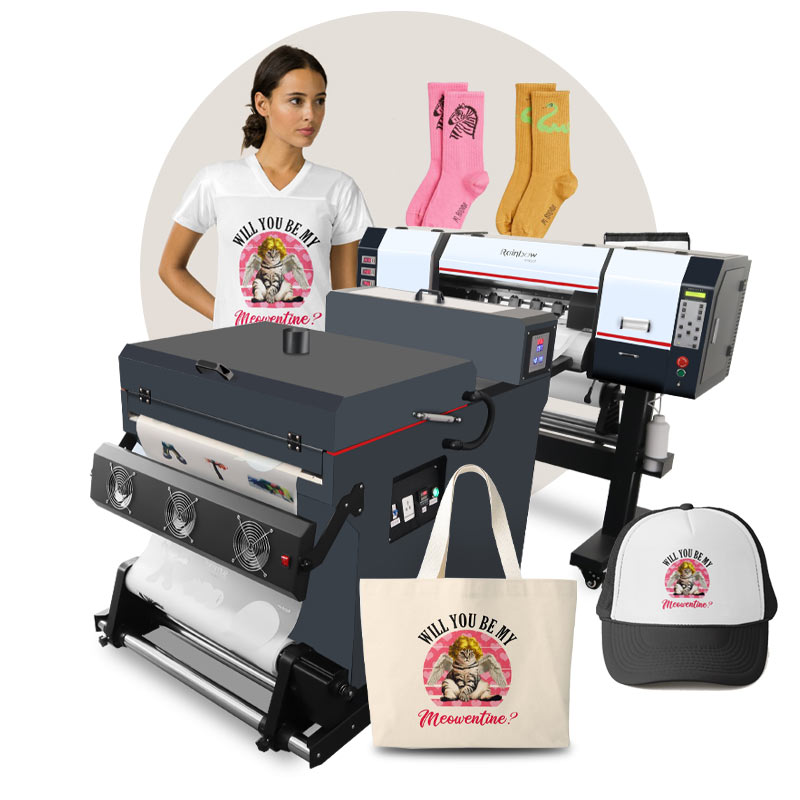DTF Printing Demystified: Everything You Required to Learn About Direct-to-Film
DTF Printing Demystified: Everything You Required to Learn About Direct-to-Film
Blog Article
Ultimate Guide to DTF Printing Methods for Stunning Textile Styles
Starting the trip of mastering DTF printing methods can open a world of possibilities for producing visually fascinating fabric styles. As the fabric sector proceeds to advance, remaining in advance of the curve with innovative printing methods is vital. In this guide, we will check out the complex details of DTF printing, from comprehending the essential fundamentals to unraveling progressed shade methods that can raise your styles to new heights. Stay tuned as we look into the subtleties of selecting the best materials, refining the printing process, and conquering common challenges to achieve sensational results.
Understanding DTF Printing Essentials
DTF printing, a procedure that involves transferring layouts from a special movie to textiles utilizing heat and pressure, forms the structure of textile printing methods. The initial action in DTF printing involves developing or selecting a style that will certainly be printed onto the fabric.
The last outcome is a sensational, durable fabric layout that is cleanable, adaptable, and immune to fading. On the whole, understanding the essentials of DTF printing is essential for mastering this modern textile printing technique.
Picking the Right Fabric Products
Having actually developed the foundational principles of DTF printing techniques for textile designs, the following essential factor to consider exists in choosing the proper textile materials to complement this ingenious process properly. The success of a DTF print mainly depends upon the compatibility between the selected textile and the printing technique. When selecting fabric materials for DTF printing, it is important to consider the fabric's make-up, weave, and appearance. Fabrics that function well with DTF printing include polyester blends, spandex, nylon, and various other artificial materials. These fabrics typically have a smooth surface area that permits dynamic and detailed prints. Furthermore, the stretchability of these products can fit the warm transfer procedure included in DTF printing without distorting the layout. It is a good idea to avoid all-natural fibers such as cotton or silk, as they may not generate the exact same level of print quality and sturdiness. By selecting the appropriate textile products, designers can take full advantage of the potential of DTF printing to produce lasting and magnificent textile layouts.

Mastering the Printing Refine
To succeed in DTF printing techniques for textile designs, grasping the printing procedure is crucial for achieving high-quality and consistent results. The printing process in DTF includes a number of vital actions that call for accuracy and focus to information. Preparing the artwork for printing is vital. This consists of making certain the layout is appropriately sized and placed for the fabric. Next off, the layout is published onto a special DTF movie utilizing a suitable printer with the appropriate setups to attain optimum shade vibrancy and quality (DTF Printing). As soon as the style is published, it is then transferred onto the fabric using a heat press equipment. The temperature level, stress, and duration of heat application must be carefully controlled to make certain correct attachment of the style to the textile. Additionally, understanding the peeling off procedure after heat pressing is essential to stop any type great post to read of damage to the design or textile. By refining each of these action in the printing process, next developers can constantly produce stunning and sturdy fabric styles with DTF printing techniques.
Enhancing Designs With Shade Strategies

Furthermore, trying out shade gradients can bring a feeling of movement and fluidness to the design. By mixing shades seamlessly, a slope impact can be achieved, adding a vibrant and contemporary touch to the textile design. In addition, making use of shade blocking methods can develop striking and bold visuals by juxtaposing various strong shades in distinctive sections of the layout.
In addition, integrating metallic or neon shades can supply a eye-catching and unique component to the fabric style, making it stick out and radiate a sense of vibrancy. When purposefully used, these color strategies can boost the general aesthetic allure of textile layouts, making them extra remarkable and fascinating.
Troubleshooting Common DTF Printing Issues
After exploring numerous color techniques to boost textile layouts, it is vital to address typical DTF printing issues that might arise throughout the production process. One usual concern is bad adhesion, which can result from inappropriate treating times or temperatures. To resolve this issue, make certain that the treating setups are accurate and that the glue used is ideal for the specific material being published on. Another constant challenge is color incongruities, where colors may show up differently than anticipated. This can be triggered by wrong color profiles or setups in the printing software program. To tackle this, confirm the shade setups and profiles to ensure they match the designated style. Additionally, concerns with photo clarity and sharpness can happen as a result of low-resolution pictures or improper printing techniques. To address this, always utilize high-quality images and change the printing settings for ideal quality. By being mindful of these common issues and executing the required troubleshooting actions, you can improve the general top quality of your DTF printed fabric styles.
Conclusion
Finally, grasping DTF printing techniques is important for creating magnificent fabric layouts. By comprehending the fundamentals of DTF printing, choosing the appropriate materials, and boosting layouts with shade methods, one can achieve remarkable outcomes. It is necessary to troubleshoot common concerns that may arise throughout the printing process to ensure a successful outcome. With technique and interest to information, one can produce attractive and unique textile layouts using DTF printing techniques.
DTF printing, a process that includes moving styles from an unique movie to fabrics utilizing warmth and pressure, develops the structure of fabric printing techniques.Having actually established the foundational her response concepts of DTF printing strategies for fabric designs, the following vital factor to consider lies in selecting the proper fabric products to complement this ingenious procedure properly. By selecting the best textile products, designers can take full advantage of the potential of DTF printing to create resilient and magnificent fabric designs.
To excel in DTF printing techniques for textile styles, grasping the printing procedure is crucial for attaining consistent and premium outcomes. DTF Printing. By sharpening each of these actions in the printing procedure, developers can continually generate sturdy and magnificent fabric layouts with DTF printing strategies
Report this page